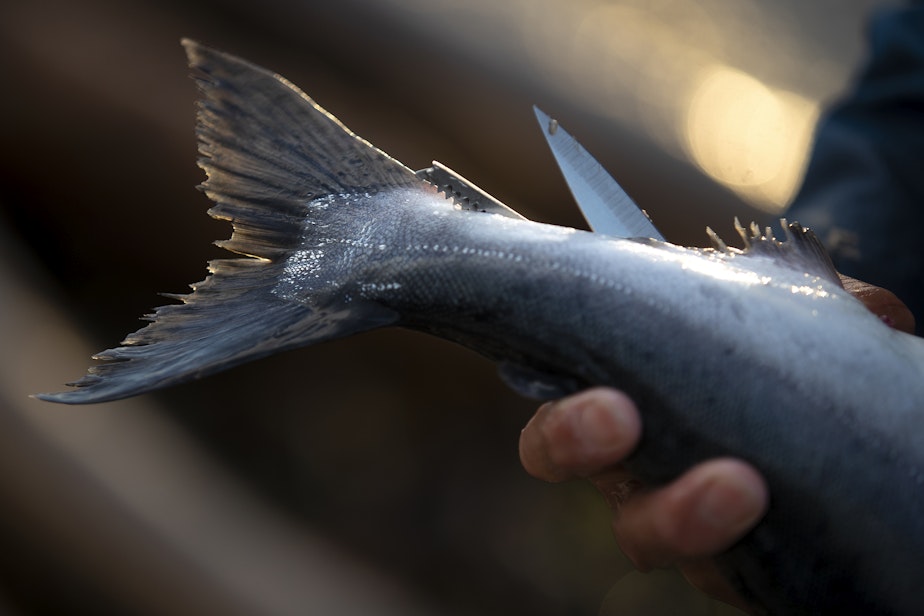Why the billions spent fixing Washington culverts may not be saving many salmon

If you’ve driven I-90 in Bellevue, 405 near Renton, or state route 305 on Bainbridge lately, you’ve likely run into construction. That means shut down lanes, redirected routes, and the knowledge that you’re now definitely going to be late to that appointment you swore you’d be on time for.
Much of that work is being done to help some fish.
Washington state has been ordered by a judge to fix culverts running under our ever-expanding urban sprawl, to allow threatened salmon to reach their spawning grounds.
A new report from Seattle Times investigative reporter Mike Reicher says the state will spend an estimated $7.8 billion on restoring salmon habitat by 2030. But the potential outcome of all that spending is as murky as a stream full of silt.
"This particular program is the most expensive salmon recovery program in the state's history," Reicher said.
Sponsored
It dates back to 2001, when a group of 21 Northwest tribes sued the state for blocking salmon and steelhead trout passage under state highways.
RELATED: How an Indigenous rights battle in WA changed tribal law, from fishing to culverts
The fish are supposed to be able to pass through culverts, big pipes or concrete tunnels that carry a stream or creek underneath roadways. But many culverts are blocked off, Reicher said.
That's diminishing the supply of local fish, something tribes have a right to under treaty agreements signed in the 1850s.
"The court back in 2013 ordered the state to replace or repair their culverts all across Western Washington, and the State Department of Transportation has been working on it since," Reicher said.
Sponsored
But work has ramped up in the last couple of years, as the state races to finish before the 2030 deadline set by the court. Now, Reicher estimates, the state is spending about $1 million a day — most of which is taxpayer money — on culvert restoration.
RELATED: New culverts in Washington state cost $20 million each. The DOT needs to replace 400 of them by 2030
But one thing the state isn't doing, Reicher added, is confirming if the repaired culverts will actually help salmon.
That's because not all culverts run solely through state land — they can be on private property, or city or county-owned land. So while a culvert may be restored in one location by the state, a few miles away, it could be cut off by a dam or grate.
"The big question is, what do the fish actually need?" Reicher said, adding that some people working in salmon recovery, including the tribes and the state, say the idea is that all manmade barriers will eventually be removed.
Sponsored
But that's playing the long game. Reicher said currently most of them have no plans for removal.
"But the concern now is these species are continuing to decline," he said. "And the question is, how do you help them now?"
Listen to Soundside's full conversation with Mike Reicher by clicking the play icon at the top of this story.





